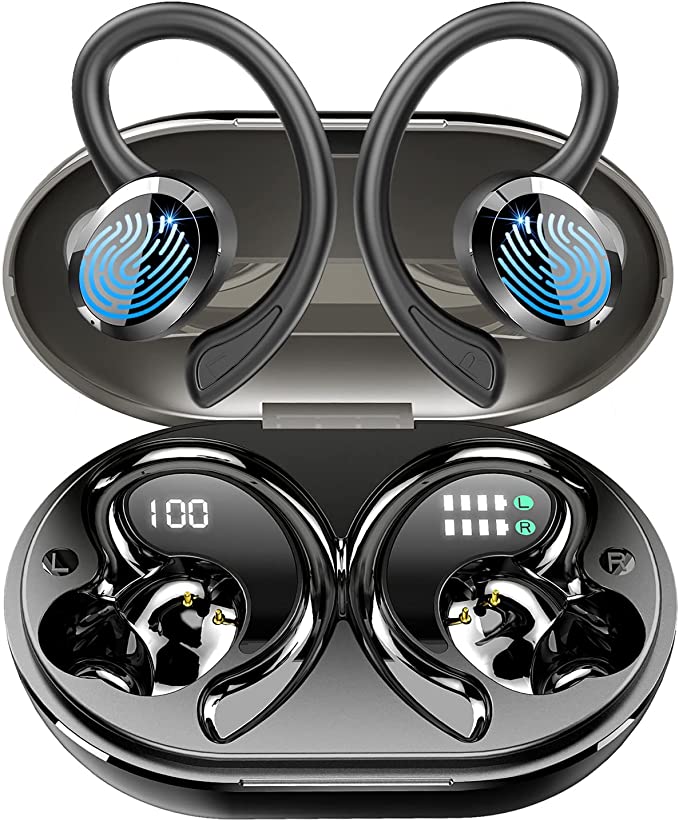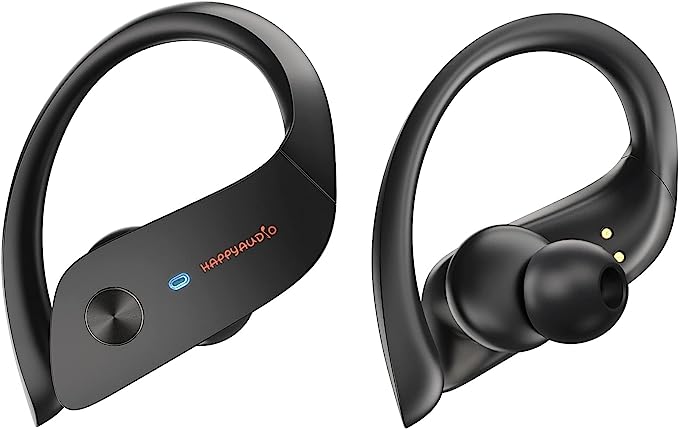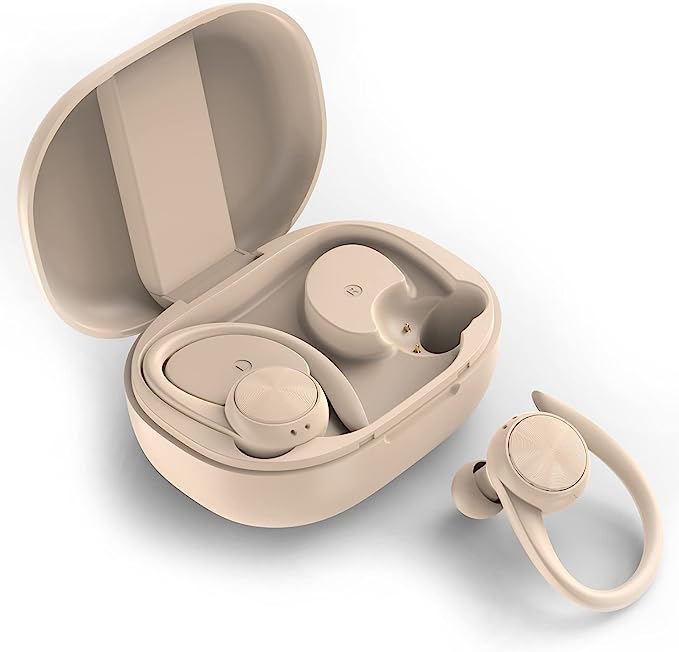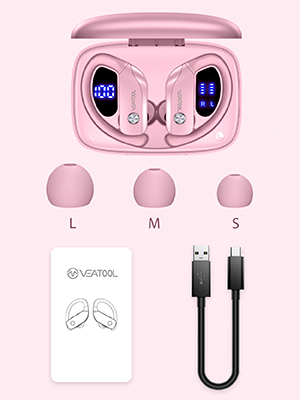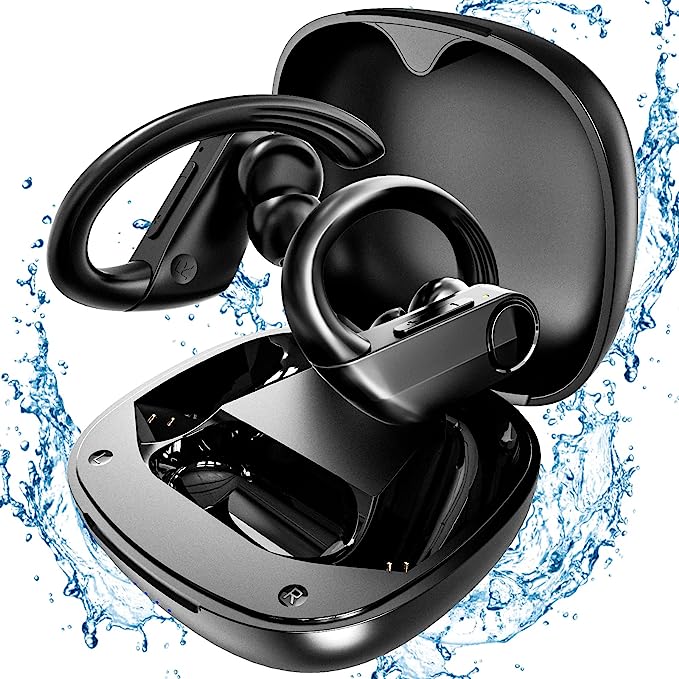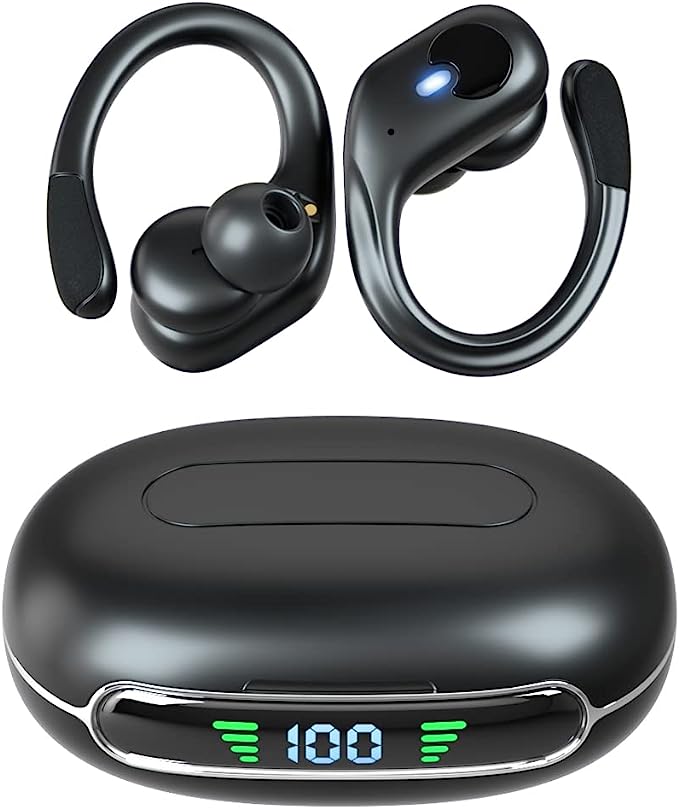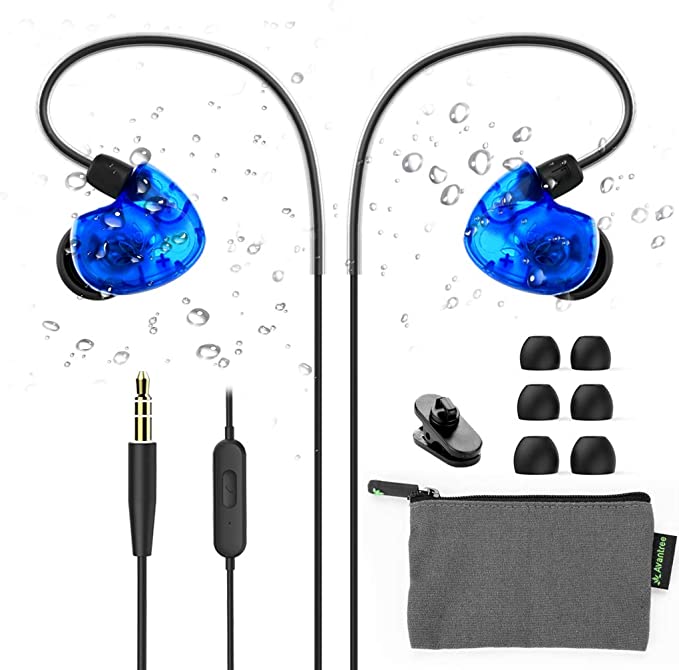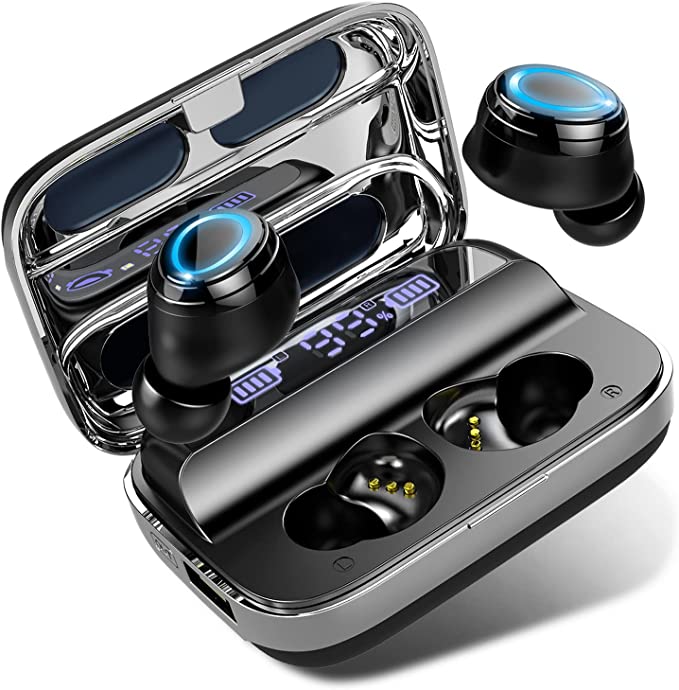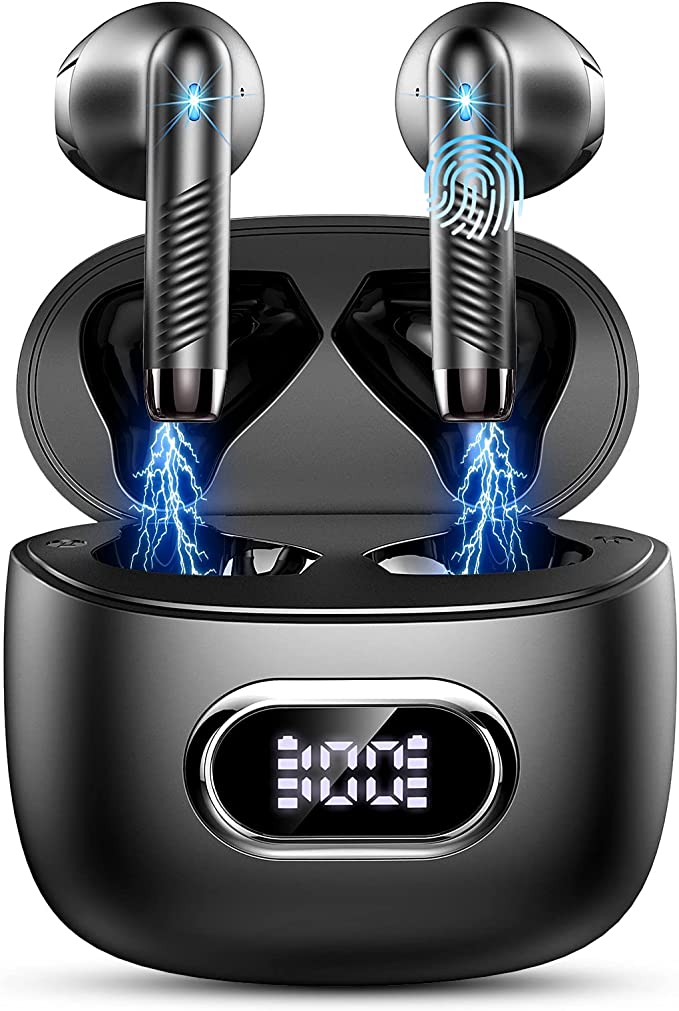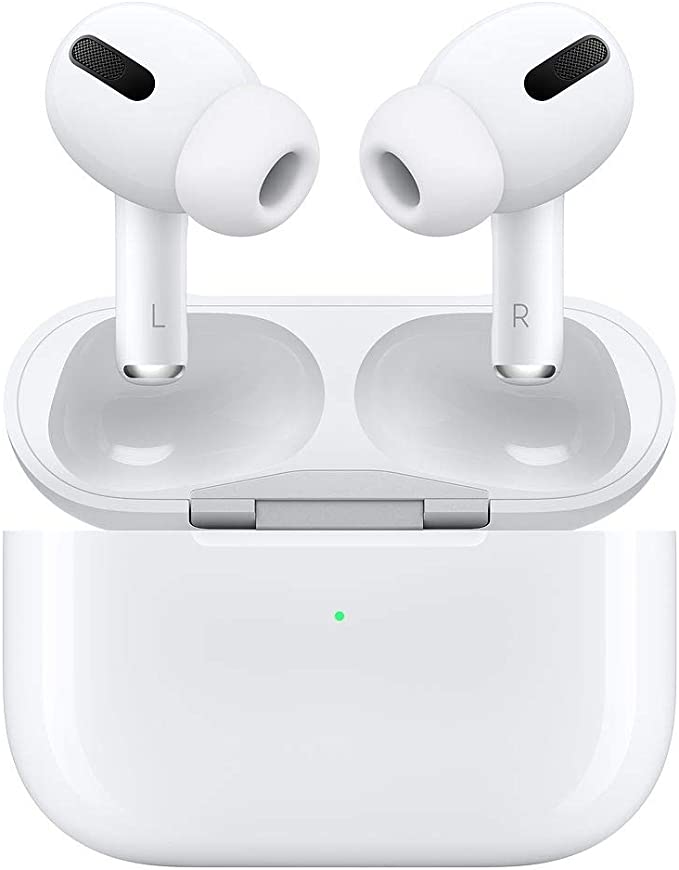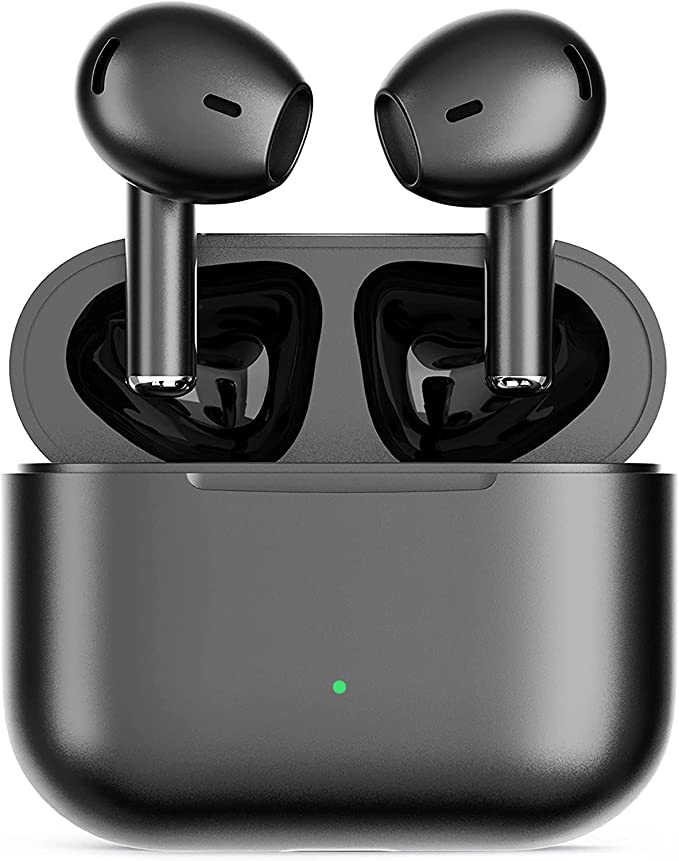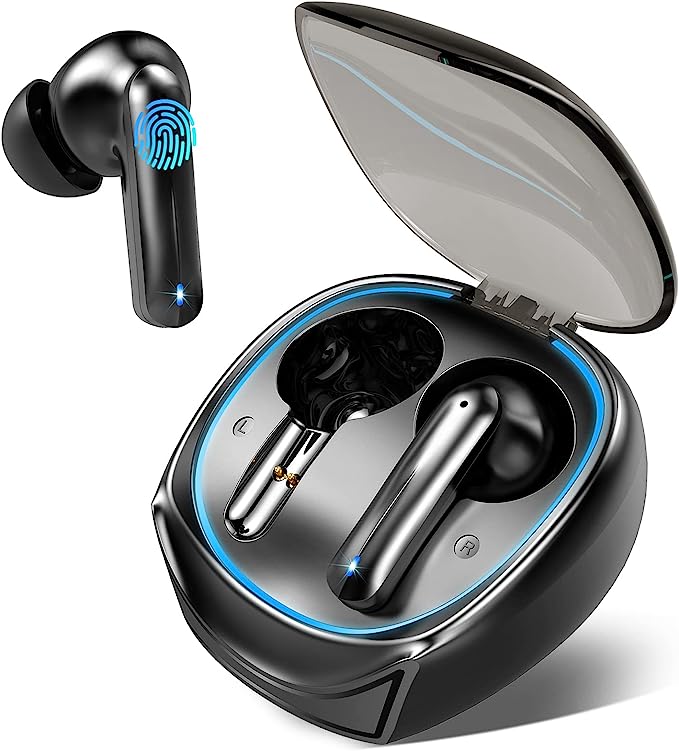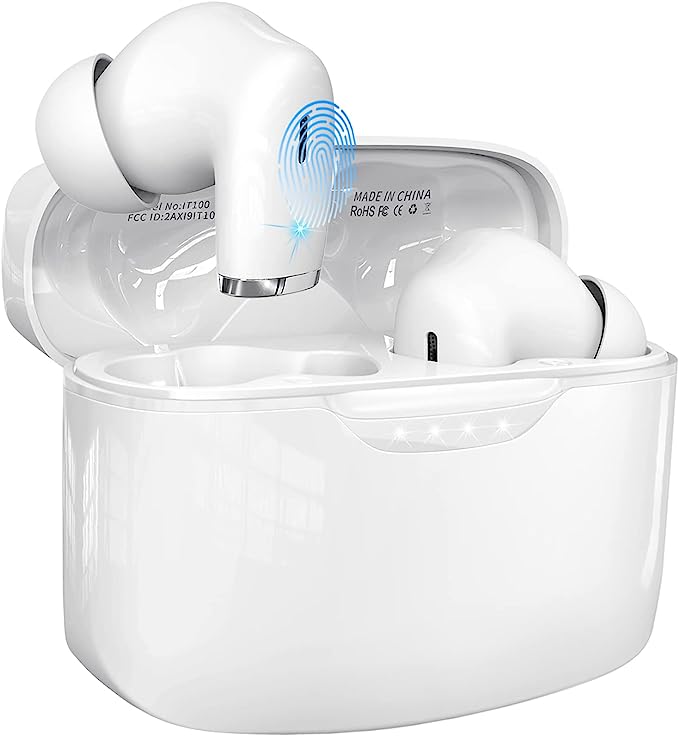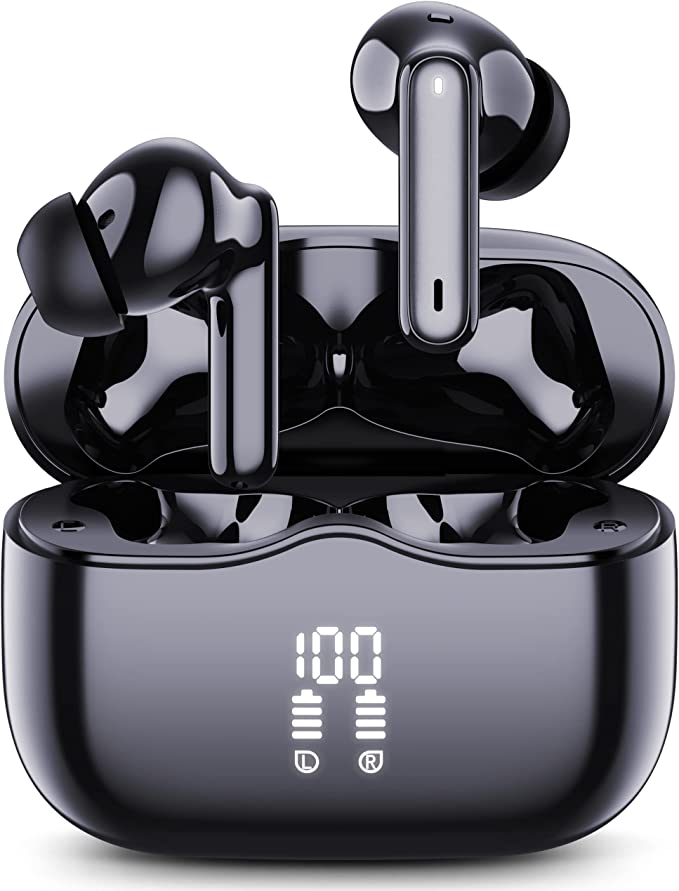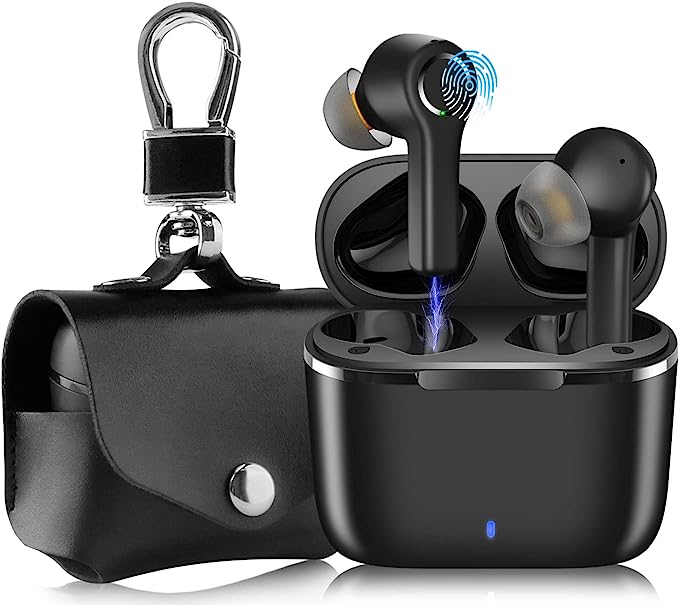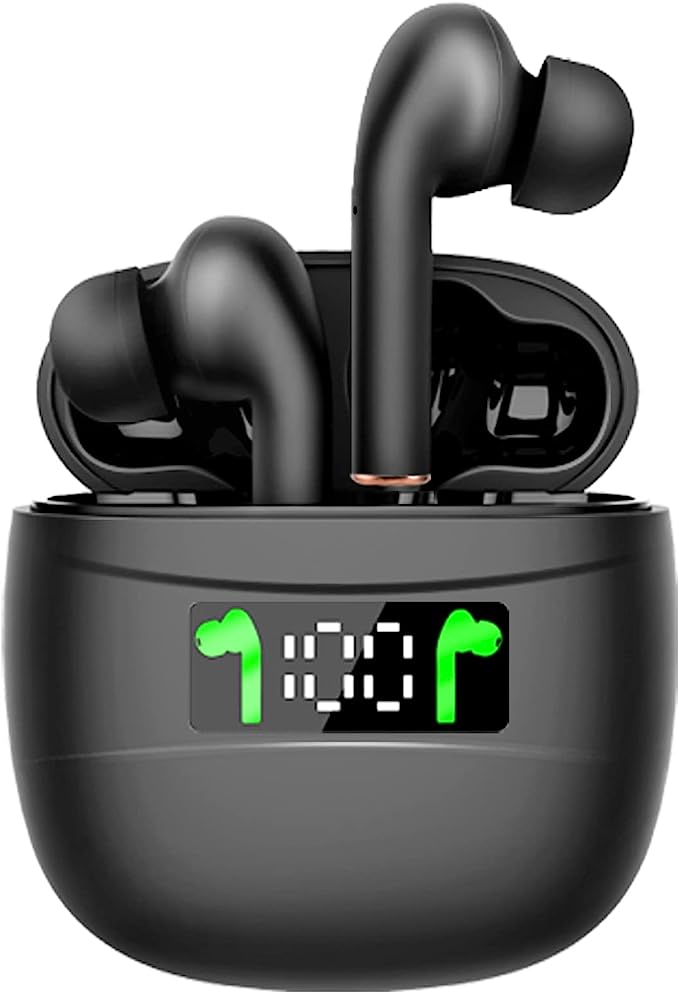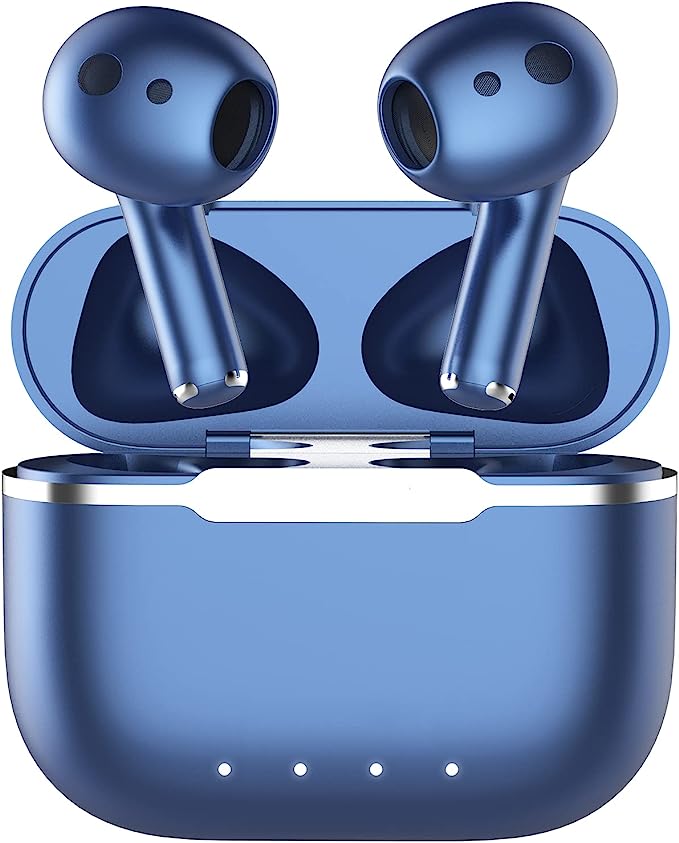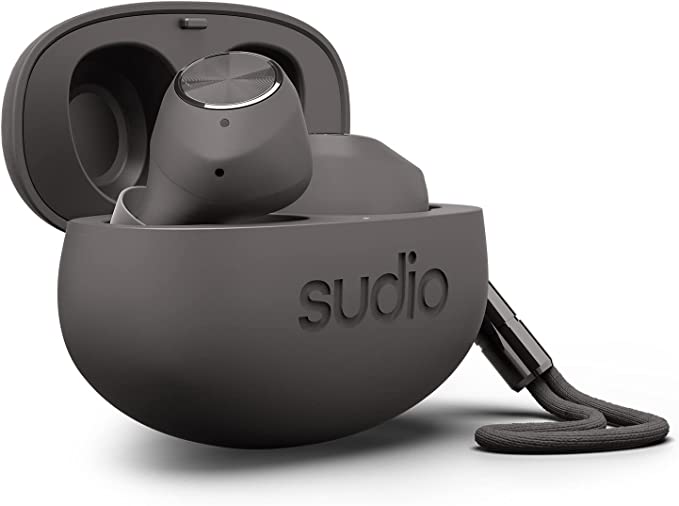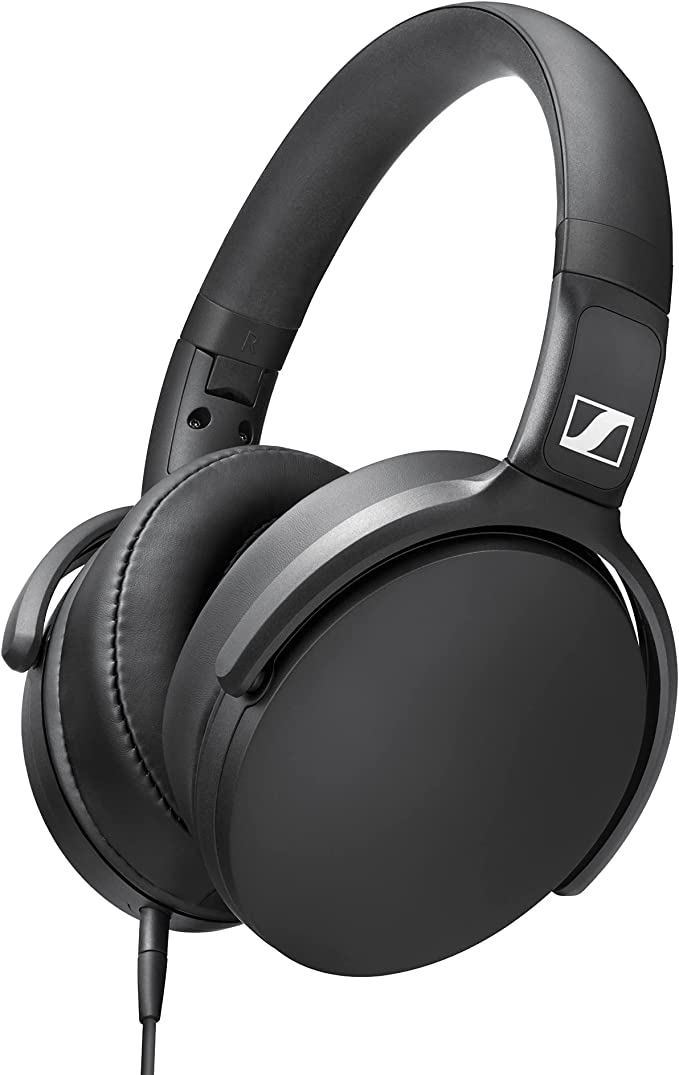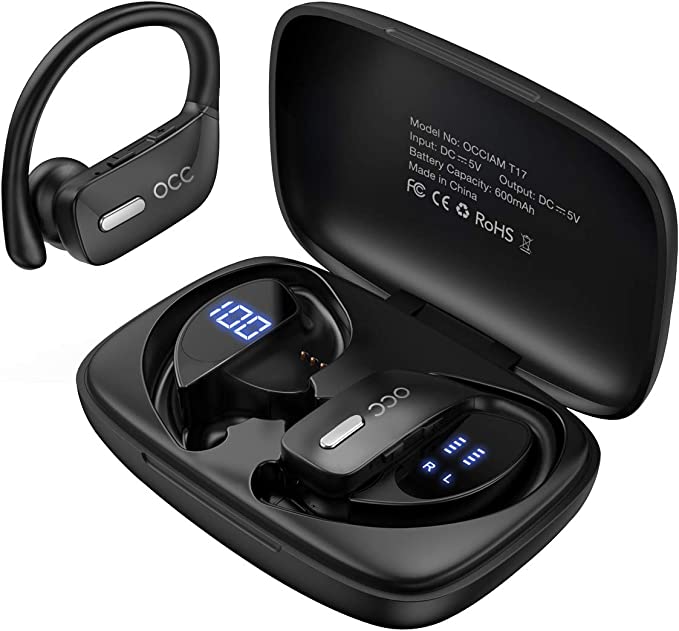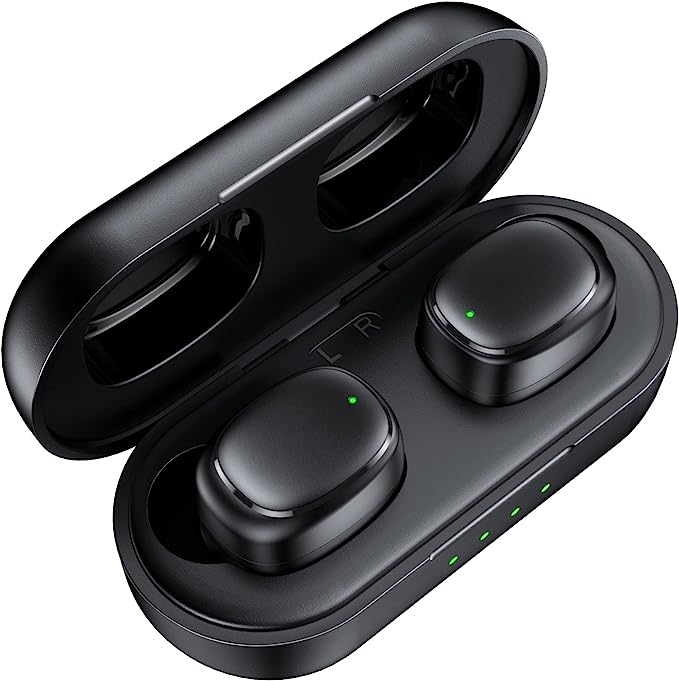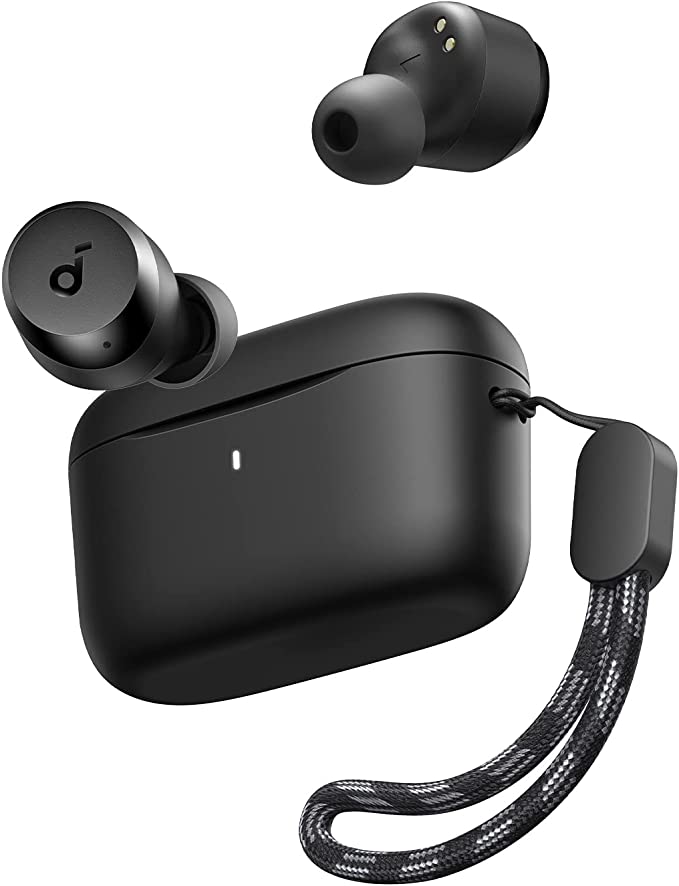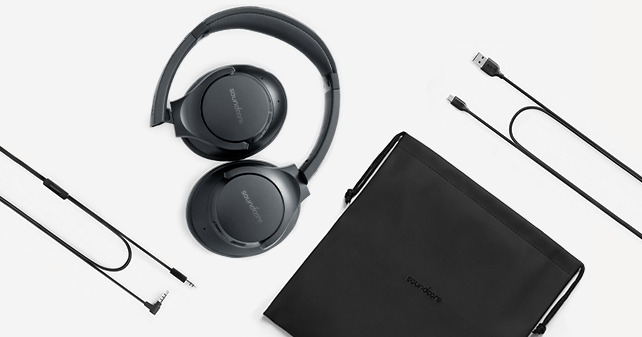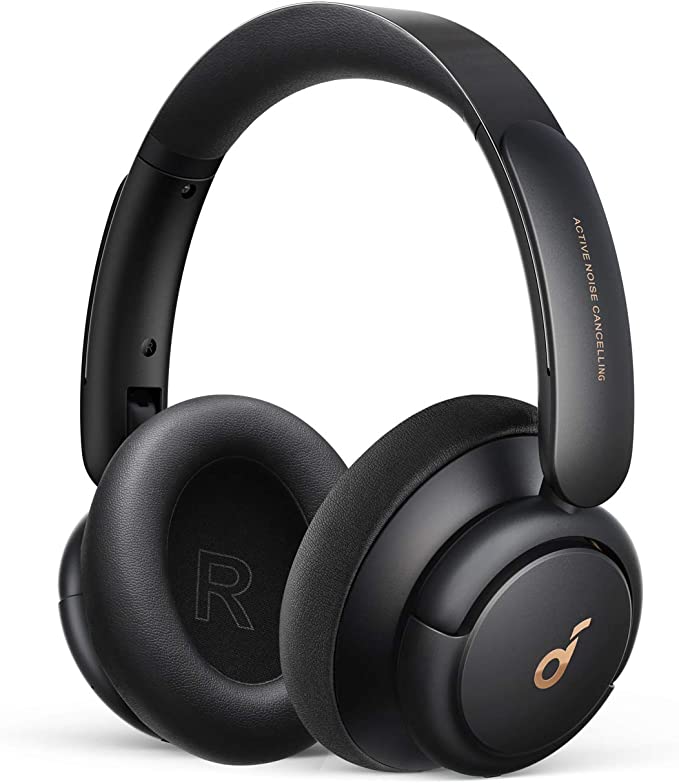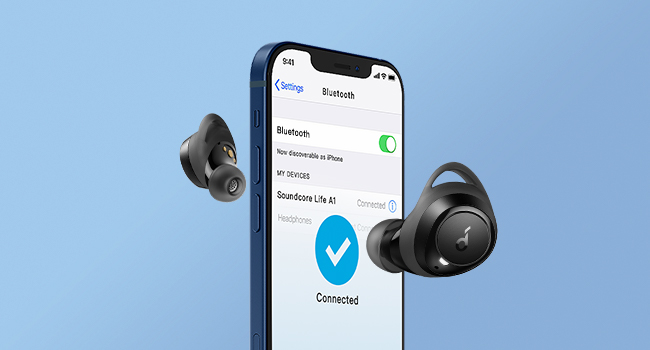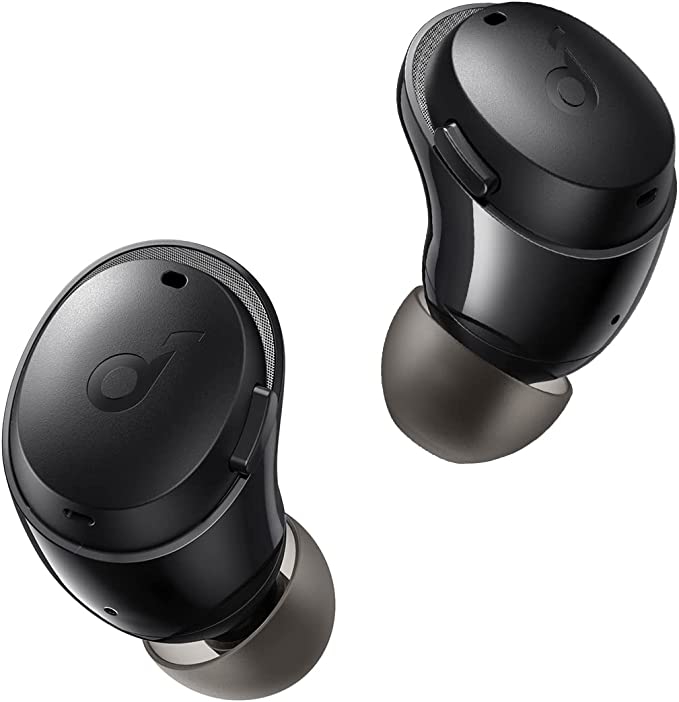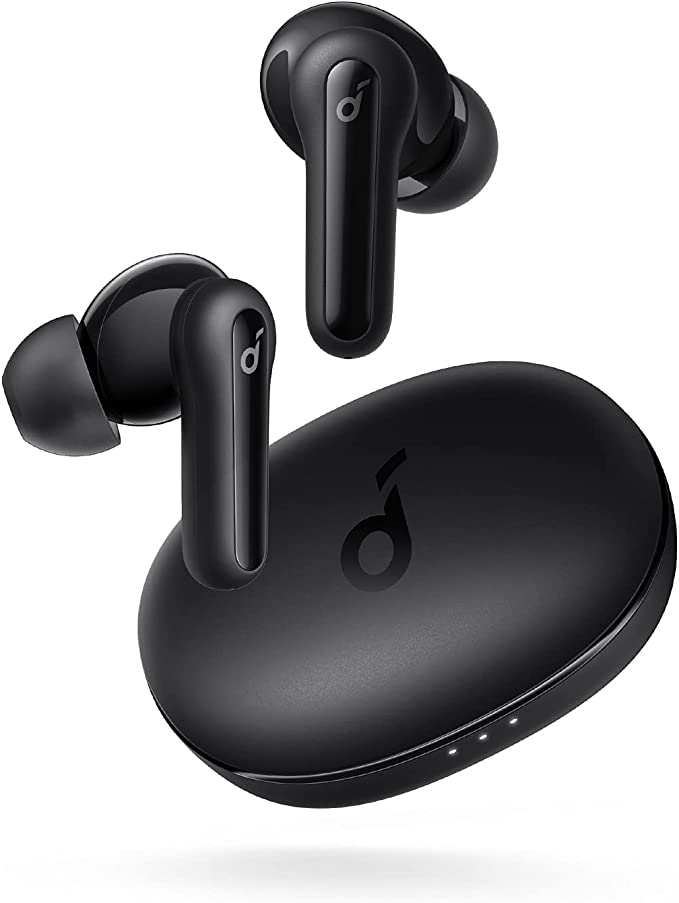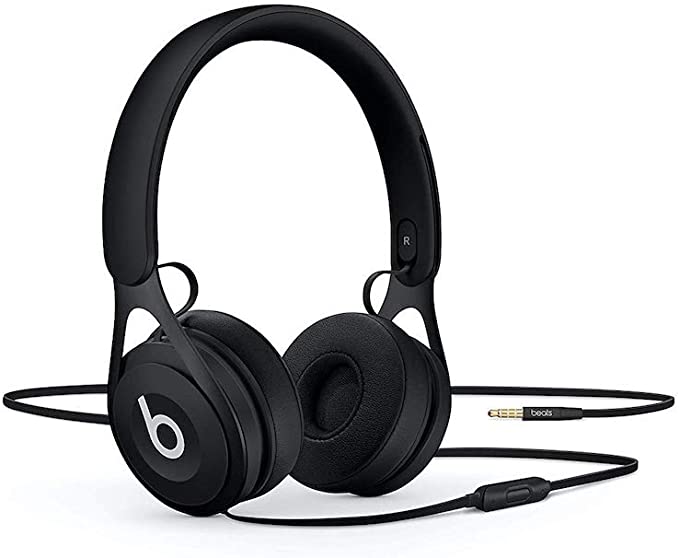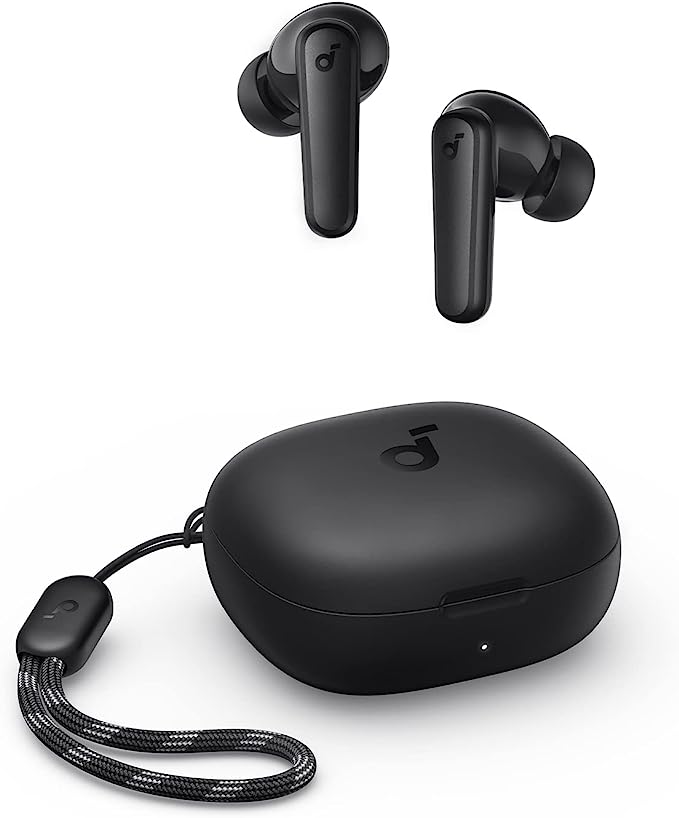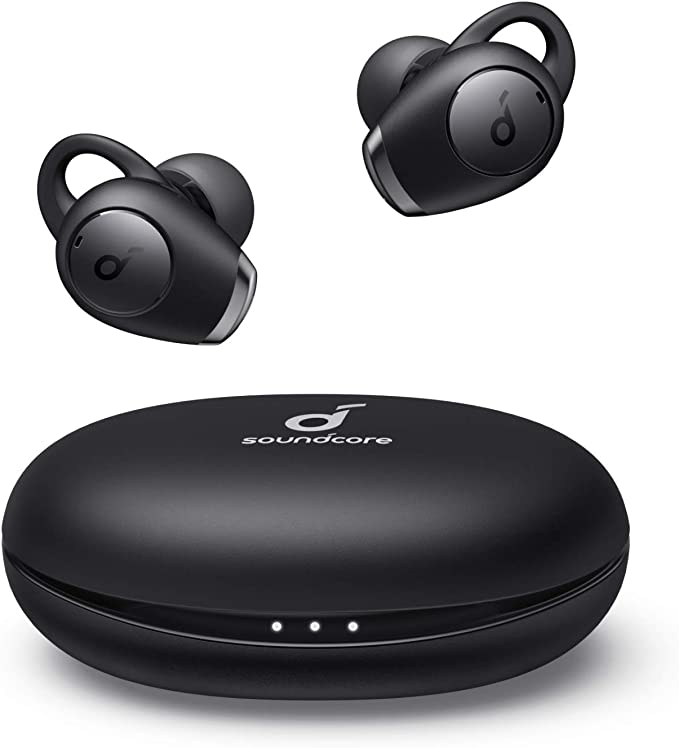Rolosar Q76 Wireless Earbuds: Unpacking the Science of All-Day Audio and Workout Freedom with Bluetooth 5.4
Update on May 19, 2025, 4:52 p.m.
The soundscape of an active life is a demanding one. It’s no longer just about a motivating playlist; it’s about an uninterrupted flow state, crystal-clear communication on the move, and a steadfast resilience against the elements. The journey of wireless audio, from a tangle-free novelty to an indispensable extension of our digitally-interwoven lives, has been remarkable. For those who thrive on movement – be it a morning run, a gym session, or navigating the urban sprawl – the quest for the perfect audio companion is a continuous one. Today, we’re not “reviewing” a product in the traditional sense, but rather embarking on a fascinating exploration of how contemporary consumer audio technology aims to meet these multifaceted demands. Our subject for this deconstruction is the Rolosar Q76 wireless sport earbuds, and our insights are drawn from the publicly available product specifications provided by Rolosar, viewed through the lens of an audio technology analyst.

The Unseen Current: Riding the Wave of Bluetooth 5.4
Every wireless experience hinges on the invisible threads of its connection technology. For the Rolosar Q76, this is Bluetooth 5.4. But what does this number truly signify for you, the listener?
A Whisper of History: Bluetooth, named rather charmingly after a 10th-century Danish king famed for uniting disparate Danish tribes, had a similarly ambitious goal: to unite different devices wirelessly. From its early days, enabling hands-free calls with rather conspicuous headsets, it has undergone a stunning evolution. Each iteration has brought us closer to the seamless, high-fidelity, and low-energy experience we increasingly expect.
Decoding 5.4: The move to Bluetooth 5.4, as highlighted in the Rolosar Q76 specifications, isn’t just an incremental number change; it represents a continued refinement of this ubiquitous standard.
* The “Wider, Faster Lanes”: Think of Bluetooth data transmission like a highway. Bluetooth 5.4, building upon its predecessors, aims to offer an expanded and more efficient highway system. The product information for the Q76 mentions “2x faster transfer speeds” (compared to Bluetooth 5.3 in one part of its description, while the product itself is named “2024 Bluetooth 5.4 Headphones Sport”) and “more stable transmission.” For you, this translates to a more robust and reliable audio stream, less prone to those frustrating dropouts or stutters, especially when your phone is tucked in a pocket or bag during vigorous movement. It’s about keeping your audio flowing as smoothly as your stride.
* The “Energy Sipper”: One of the long-standing battles in portable electronics is power consumption. Bluetooth 5.4 is designed with enhanced power efficiency in mind. This means the earbuds themselves, and your transmitting device, can communicate without guzzling battery. This efficiency is a crucial ingredient in achieving the extended playtimes we’ll touch upon later.
* “In-Sync Sensation”: Latency – the tiny delay between when a sound is sent from your device and when you hear it – has been a persistent challenge, particularly noticeable in videos where lip-sync is off, or in gaming. Bluetooth 5.4 strives for an “ultra-low latency listening experience.” While the Q76’s product data doesn’t quantify this in milliseconds, the emphasis suggests a focus on minimizing this lag, making for a more natural and enjoyable experience when watching content or even during fast-paced calls.
The Q76 Embodiment: The Rolosar Q76 specifications also highlight an “auto connection” feature. After the initial pairing ritual, opening the charging case lid should prompt the earbuds to swiftly reconnect to the previously paired device. This is the kind of subtle technological refinement that smooths daily interactions, removing a small point of friction and getting you to your audio faster. This convenience, coupled with broad compatibility across iOS, Android, and other Bluetooth-enabled devices like tablets and laptops, underscores the design intent for a versatile, untethered audio experience.
The Art of Being Heard (and Hearing Well): ENC Microphones and Sonic Engineering
A stable connection is foundational, but the audio experience itself is twofold: how well you hear your content, and how well others hear you.
The “Cone of Clarity”: The Rolosar Q76 earbuds are described as featuring “ENC Noise Canceling Mic.” It’s important to distinguish Environmental Noise Cancellation (ENC) for microphones from Active Noise Cancellation (ANC) for listening. While ANC uses microphones to detect and actively neutralize external sounds before they reach your ears, ENC focuses on the outgoing audio – your voice. Imagine ENC as a smart bouncer at the microphone’s V.I.P. entrance, specifically trained to recognize your voice and filter out the surrounding hubbub – the clatter of gym weights, the rumble of city traffic, or the chatter of a busy café. It employs sophisticated algorithms to differentiate your speech from this ambient noise, aiming to transmit your voice with “clarity and precision” for “hassle-free conversations.” This is crucial for anyone who needs to take calls in less-than-ideal acoustic environments.
The Heartbeat of the Music: The 14.2mm Drivers: For the listening part of the equation, the Q76 earbuds house “14.2mm double-layer diaphragm drivers.” The driver is the engine of an earbud, the component that vibrates to create the sound waves that your ears interpret as music, podcasts, or a friendly voice. The size of the driver (14.2mm is relatively large for an earbud) and the material and construction of its diaphragm (the vibrating membrane, here described as “double-layer”) are critical to its sonic output. Larger diaphragms can, in principle, move more air, which can contribute to a more impactful bass response. The “double-layer” construction likely aims to achieve a balance of stiffness and lightness – stiffness to prevent distortion at higher volumes and reproduce sound accurately, and lightness to respond quickly to the audio signal for detailed sound. Rolosar states these drivers deliver “sound with strong bass, clear mids, and bright treble,” the classic triad of a balanced Hi-Fi (High-Fidelity) sound signature, striving to reproduce the original audio recording as faithfully as possible within its 30ft connection range.
Forged for the Grind: The Science of IP7 Resilience and Ergonomic Tenacity
Active lifestyles demand robust gear. For earbuds, this means withstanding moisture and staying put, no matter the intensity of the workout.
Decoding the “IP Code”: The Rolosar Q76 boasts an “IP7 waterproof rating.” “IP” stands for Ingress Protection, a standard defined by the International Electrotechnical Commission (IEC). The first digit (if present, or ‘X’ if not tested for it) rates protection against solid particles (like dust), and the second digit rates protection against liquids. An IP rating with a ‘7’ as the second digit, like IPX7 (assuming no specific dust rating is claimed here), signifies a high level of water resistance. Specifically, it means the earbuds are tested to withstand immersion in water up to 1 meter (about 3.3 feet) deep for a duration of up to 30 minutes under standardized laboratory conditions.
The Sweat, Rain, and “Oops” Factor: What does this IP7 rating mean practically for a Q76 user? It offers significant peace of mind. These earbuds are designed to “resist sweat, rain and minor water splashes during exercising, gym, cycling etc.” So, whether you’re pushing through a high-intensity interval training session, get caught in an unexpected downpour on your run, or accidentally splash them by the sink, the internal electronics are engineered to be protected. This resilience is key to the longevity and reliability of sport-focused audio gear.
The “Anchor Effect”: Beyond surviving moisture, earbuds designed for sport must offer a secure and comfortable fit. The Q76 features “flexible and soft ear hooks” that loop over the ear, providing a crucial anchoring point. This design leverages the ear’s natural contours to prevent the earbuds from dislodging during dynamic movements like jumping or sprinting. To further cater to individual ear shapes and sizes, and to enhance both comfort and passive noise isolation (which physically blocks some external sound), Rolosar includes “3 multiple sizes of ear tips (S/M/L).” A good seal from the ear tip not only improves comfort but also optimizes the bass response and keeps your audio focused.
The Marathoner’s Power Pack: Sustained Energy and Intuitive Interaction
For truly wireless earbuds, battery life isn’t just a feature; it’s a cornerstone of their utility.
Beyond a Single Session: The Q76 earbuds are specified to provide about “10hrs playback per charge.” This is a respectable figure for continuous listening. However, the pocket-sized charging case extends this significantly, offering a total usage time of up to “50 hours by providing multiple additional charges on the go.” This extended battery life, likely facilitated by efficient Lithium Polymer battery technology within both the earbuds and the case, means less frequent “range anxiety” for your audio. For many users, this could translate to days, or even a week, of typical use before needing to find a power outlet for the case itself.
The Modern Fuel-Up: When the case does need replenishing, it utilizes a “Type-C” charging port. This is the modern, reversible USB standard that has become prevalent across many electronic devices, valued for its convenience and often faster charging capabilities compared to older micro-USB ports. Adding to this convenience is the “Dual LED Display.” The Q76’s charging case features a transparent cover, allowing users to see “a more intuitive real-time indication of the remaining battery level of the case and the charging status of the earbuds” without needing to open it. These are thoughtful details that enhance the everyday user experience.
Fingertip Symphony: The Nuance of Smart Touch: Interacting with your audio and calls without reaching for your phone is paramount during activities. The Q76 incorporates “Smart Touch” controls, likely using capacitive sensors embedded in the surface of the earbuds. These sensors detect the slight electrical capacitance of a fingertip. According to the product information, the “exact touch position…is located in the upper part of the earphone surface.” Simple taps allow users to manage playback (play/pause, change song), adjust volume, handle calls (answer/end), and activate their paired device’s voice assistant (like Siri or Google Assistant). This direct control scheme is designed to be intuitive, allowing for quick adjustments without disrupting your workout or workflow.
Concluding Thoughts: The Symphony of Sciences in Your Ear
The Rolosar Q76 wireless earbuds, as gleaned from their published specifications, represent a fascinating convergence of advancements in Bluetooth technology, audio engineering, material science, and ergonomic design. From the pursuit of a more stable and efficient wireless link with Bluetooth 5.4, to the clarity sought by ENC-equipped microphones and 14.2mm drivers, the resilience offered by an IP7 waterproof rating, the endurance of a 50-hour battery ecosystem, and the convenience of smart touch controls – each element plays a role in addressing the specific needs of an active, connected individual.
Understanding the science and engineering principles behind these features allows us to appreciate consumer electronics not just as gadgets, but as sophisticated tools born from persistent innovation. While the ultimate performance of any device is also shaped by factors like manufacturing quality and real-world usage, the technological foundations of the Rolosar Q76 point towards a thoughtful effort to create a comprehensive audio solution. As personal audio technology continues its rapid evolution, it’s this intricate symphony of sciences that will undoubtedly continue to enrich our sonic experiences in increasingly seamless and immersive ways.
